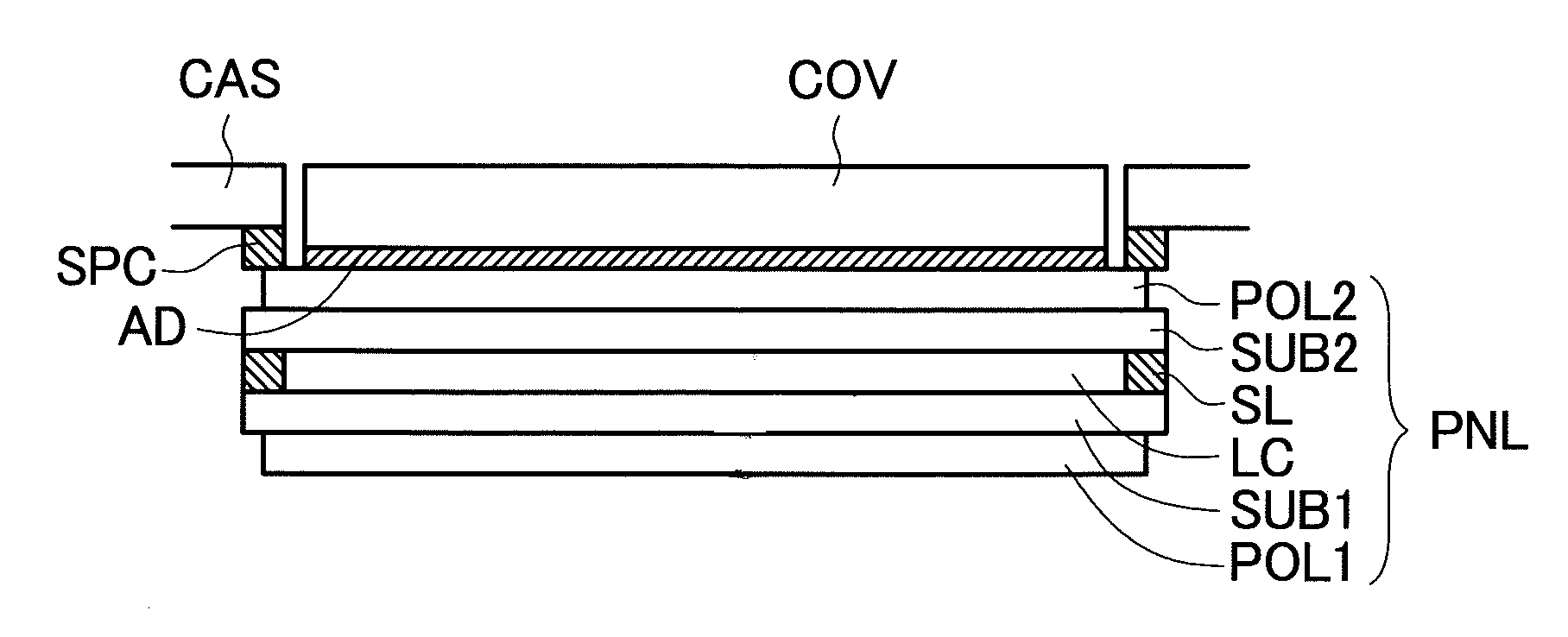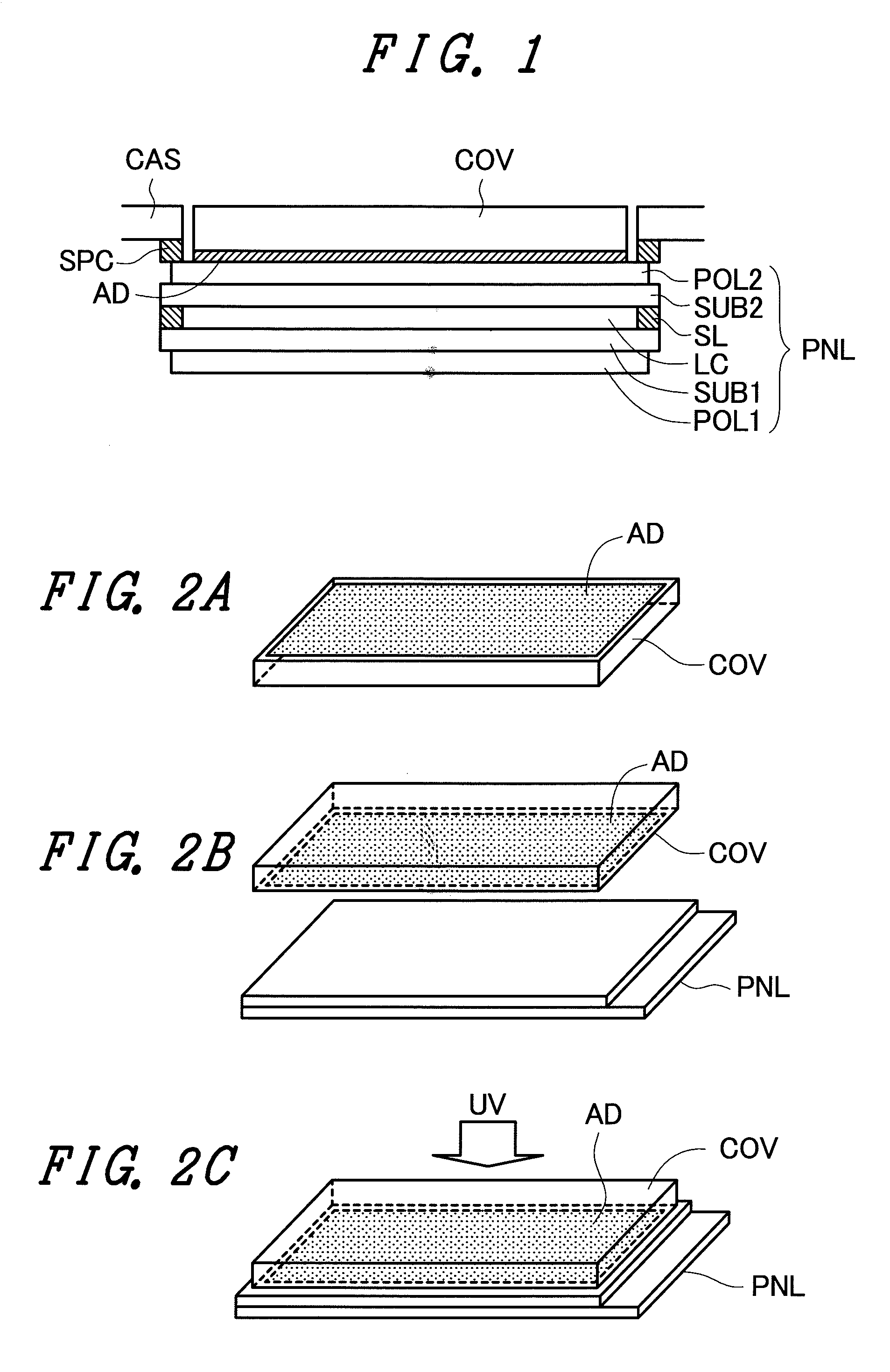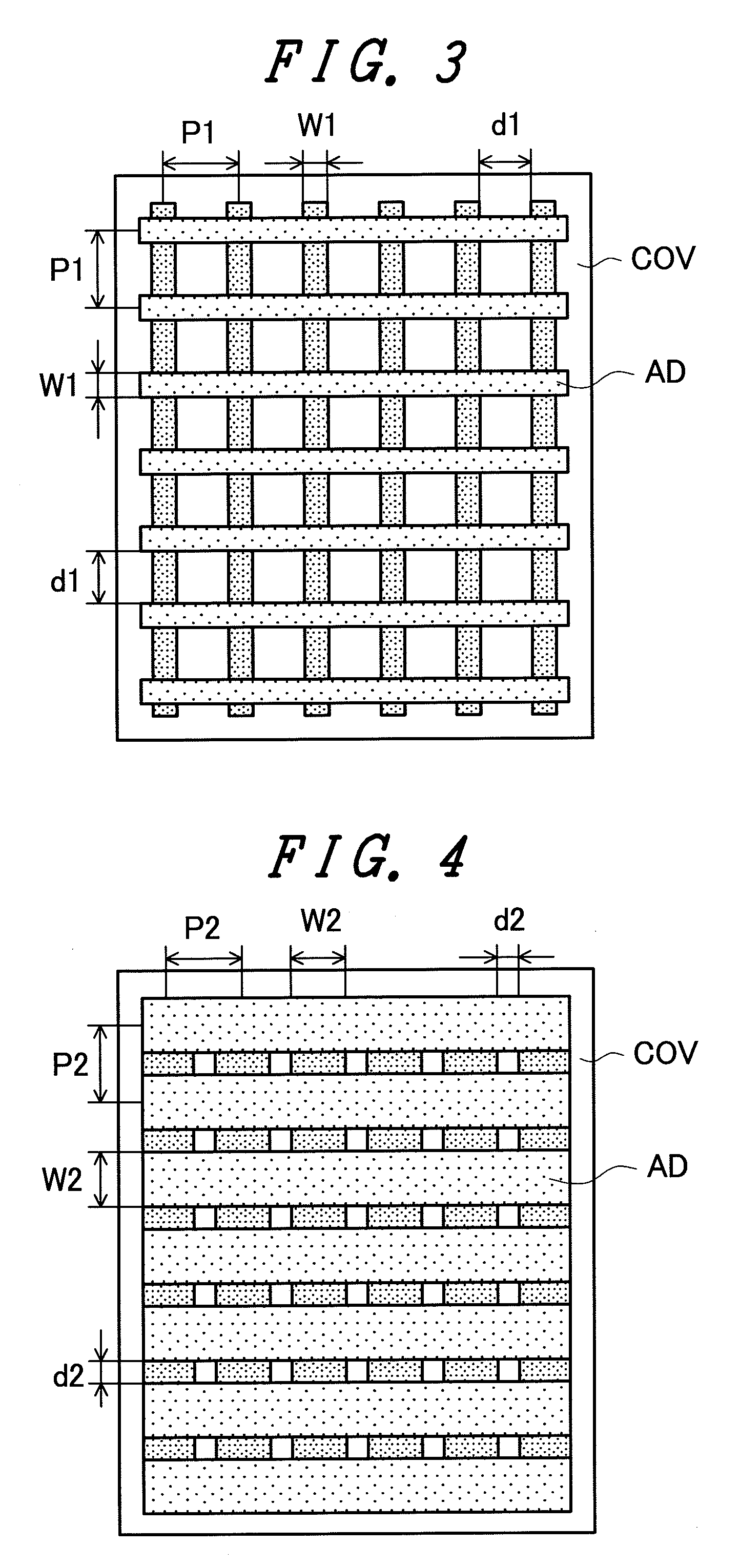Manufacturing method of display device
- Summary
- Abstract
- Description
- Claims
- Application Information
AI Technical Summary
Benefits of technology
Problems solved by technology
Method used
Image
Examples
embodiment 1
[0062]FIG. 1 is across-sectional view for explaining one example of a display device according to an embodiment 1 of the invention. In the embodiment 1, a liquid crystal display is used for a display panel PNL. In FIG. 1, the display panel PNL such as a liquid crystal display panel is incorporated into a casing CAS for a portable telephone or the like. The display panel PNL has a substrate SUB1 that is a translucent insulating substrate made of glass or the like, a substrate SUB2 that is a translucent insulating substrate made of glass or the like, a sealing material SL for bonding the substrate SUB1 and the substrate SUB2, a liquid crystal LC sealed into the inside surrounded by the substrate SUB1, the substrate SUB2 and the sealing material SL, a polarizer POLL disposed on the side of the substrate SUB1 opposite to the liquid crystal LC, and a polarizer POL2 disposed on the side of the substrate SUB2 opposite to the liquid crystal LC. Also, a thin film transistor and a pixel elect...
embodiment 2
[0078]FIG. 7 is a side view for explaining one example of a manufacturing method of a display device according to an embodiment 2 of the invention. When the display panel PNL and the transparent substrate COV are bonded, they are bonded while the display panel PNL is bent to be convex on the side of bonding face, as shown in FIG. 7. Thereby, the possibility that large bubbles are entrained can be reduced. In this case, it is preferable that the total of the thickness t1 of the substrate SUB1 and the thickness t2 of the substrate SUB2 is 0.8 mm or less, more preferably 0.6 mm or less. The lower limit is not particularly limited, but the total is desirably 0.1 mm or more.
[0079]Though the display panel PNL is bent in FIG. 7, the transparent substrate COV or both the display panel PNL and the transparent substrate COV may be bent so as to be convex on the side of bonding face during bonding.
embodiment 3
[0080]FIG. 8 is a cross-sectional view for explaining one example of a display device according to an embodiment 3 of the invention. A different point from the embodiment 1 of FIG. 1 is that the adhesive AD extends up to the end part of the polarizer POL2. The adhesive AD can be spread outside the end part of the transparent substrate COV, when bonded, by adjusting the viscosity of the adhesive AD, the coating pattern, or the coating amount, for example. Or the adhesive AD may be coated on the side of the display panel PNL.
PUM
| Property | Measurement | Unit |
|---|---|---|
| Temperature | aaaaa | aaaaa |
| Temperature | aaaaa | aaaaa |
| Length | aaaaa | aaaaa |
Abstract
Description
Claims
Application Information
 Login to View More
Login to View More - R&D
- Intellectual Property
- Life Sciences
- Materials
- Tech Scout
- Unparalleled Data Quality
- Higher Quality Content
- 60% Fewer Hallucinations
Browse by: Latest US Patents, China's latest patents, Technical Efficacy Thesaurus, Application Domain, Technology Topic, Popular Technical Reports.
© 2025 PatSnap. All rights reserved.Legal|Privacy policy|Modern Slavery Act Transparency Statement|Sitemap|About US| Contact US: help@patsnap.com



